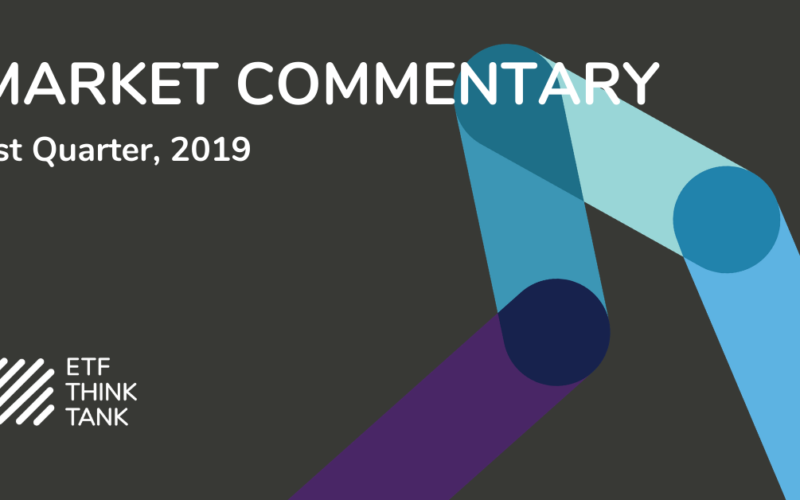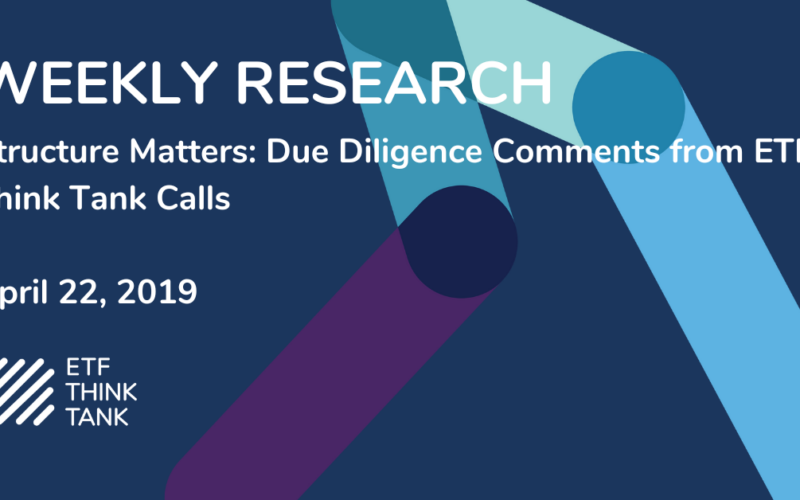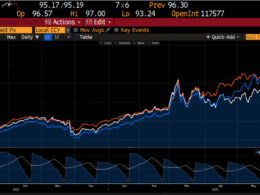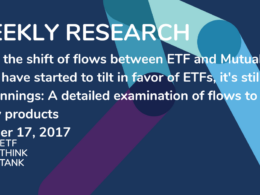When is Transparency Not Transparent?
In last week’s ETF Think Tank research note, we covered our favorite client alignment factor: Transparency. It is our belief that advisors and fiduciaries must know what they own. That said, ETF innovators this past week pushed forward with regulators on a new form of ETF that would limit transparency to benefit active managers that wish to obscure their holdings. Although we applaud these innovators for pushing the envelope, we still ask, “Should these non-transparent ETFs be allowed to offer the same liquidity and tax efficient benefits to advisors as transparent ETFs?” The client alignment factors of tax efficiency and liquidity are actually derivatives of transparency and, in our opinion, would likely suffer in this new non-transparent version of an ETF.
Firms like Davis and ARK have embraced the transparent active ETF as fin-tech structures to deliver their investment management services in a superior wrapper. Although we are supportive of innovations like non-transparent ETFs because they will foster new entrants to embrace values of ETF investing, we feel this non-transparent structure is designed to benefit the manager rather than advisors and investors. Advisors should know what they own in order to be fiduciaries. Transferring that trust to trading firms and the investment manager threatens the other benefits of ETFs.
Transparent Tax Structures
Within the ETF Think Tank, Toroso maintains an ETF Security Master Database, built by advisors, for advisors. As we noted last week, the first category places every ETF in a classification based on the underlying holdings, hence our obsession with transparency.
The second component of our categorization system focuses on corporate structure of the ETF.


Source: Toroso security master as of April 12, 2019.
As you can see from the chart above, ETFs are formed under five primary corporate structures, each with unique tax implications. As advisors, understanding and navigating these tax implications can be a clear value add to your clients.
The 40 Act Investment Company ETF
The 40 Act Investment Company ETF structure is by far the most common and usually the most tax efficient. These ETFs are based on the same laws as mutual funds, with one major exception, an exemption from the requirement to be priced once per day. The original exemptions where predicated on clear price discovery which is the link to transparency. The ability to price intra-day resulted in a creation and redemption process that produced a tax efficient structure. The nuances are complicated, but to summarize, the creation and redemption process allows ETF portfolio managers to transfer gains and losses to authorized participants rather than realize those gains and losses within the ETF trust. A few weeks ago Dave Nadig wrote,
“The core of the story is pretty simple. ETFs use in-kind transfers to minimize taxes. For anyone who’s paid any attention to ETFs, this isn’t a secret—it’s a core feature of the product and has been for 25 years.”
Nadig’s article artfully explained the tax efficiency or tax deferral offered by the ETF structure and the fiduciary imperative for advisors to embrace this benefit.
The UIT 40 Act ETF
Although only 8 ETFs currently use this structure, it is the second largest in terms of AUM. The very first ETF, State Street’s SPDR S&P 500 ETF, $SPY, was built in this structure. Despite some limitations on ETF portfolio managers in this structure with basket trading and security lending, the tax efficiency appears to be intact.
Bloomberg wrote:
“The first and largest ETF, State Street’s SPDR S&P 500 ETF, hasn’t reported a taxable gain in 22 years. In contrast, a traditional mutual fund run by Fidelity Investments that tracks the same index had a taxable gain in 10 of those years.”
The Grantor Trust ETF
There are 64 Grantor Trust ETFs with $61 billion in assets. They are primarily used for commodities with the largest and most well-known being SSGA’s Gold Trust (Ticker: GLD). The tax treatment here can be quite complicated with K-1s, collectable taxes, and UBTI (commonly referred to as “bad income”). Although they are primarily commodities and currencies, a new sponsor, Metaurus , has developed two ETFs in the Grantor Trust structure that work with equity dividend futures. These ETFs are complicated, and we encourage advisors to engage in the ETF Think Tank for further guidance.
The Partnership ETF
There are only 8 ETFs that currently use the partnership structure and US Commodity Funds (USCF) issues them all. As the sponsors name implies, they are focused on commodities. The tax treatment/efficiency is quite different with these funds a described by ETF.com below:
“Futures-based funds have unique tax implications. Currently, 60% of any gains are taxed at the long-term capital gains rate of 20%, and the remaining 40% is taxed at the investor’s ordinary income rate, regardless of how long the shares are held. This comes out to a blended maximum capital gains rate of 27.84%. Limited partnership ETFs are considered pass-through investments, so any gains made by the trust are “marked to market” at the end of each year and passed on to its investors, potentially creating a taxable event. This means that your cost basis adjusts at year-end and you can be subject to pay taxes on gains regardless of whether you sold your shares or not. For tax reporting, limited partnership ETFs also generates a Schedule K-1 form.”
The ETN
There are over 140 ETNs that seek to provide exposure to many different asset classes. An ETN is an exchange traded, uncollateralized debt obligation of a bank, which usually seeks to provide price tracking of an index. In many ways, they are the original non-transparent Exchange Traded Product (ETP) in that the index they are tracking is transparent, but the securities held are unknown and only loosely promised by the faith in the bank issuing the ETN. To that end, they rarely distribute capital gains since they may not hold any assets. ETNs present many other complications, but tax burdens like K-1 and surprise distributions have historically not been a concern.
Advisor Client Alignment
Transparency and Tax Efficiency are two key client alignment factors fostering the growth of ETFs and advisors. The ability to not only know what is in your ETF, but how tax efficient the corporate structure is, provides advisors with a strong fiduciary value proposition for their clients.
The ETF Think Tank is committed to providing research and resources to our community of advisors.
Disclaimer
FOR FINANCIAL PROFESSIONAL USE ONLY
This information provided to the recipient by Toroso Investments, LLC (“Toroso”) is intended for use only by the persons or entity to which it was furnished. This information may not be distributed, reproduced or used without the express consent of Toroso. This material has been prepared by Toroso for informational purposes only and cannot be relied upon as tax advice. Although much of the data underlying the information presented has been obtained from sources (e.g., Morningstar and Solactive AG) believed to be reliable; the accuracy and completeness of such information cannot be guaranteed.
ETF Industry KPIs

Source KPIs: Toroso Investments Security Master, as of April 15, 2019.
ETF Launches
|
GNOM | ||
|
IBMP | ||
|
NRGZ | ||
|
NRGD | ||
|
NRGU | ||
|
YGRN | ||
|
UFO | ||
|
SFYX | ||
|
SFY | ||
|
FISR |
|
XLSR |
TETF.Index Performance

Returns as of April 15, 2019. Inception Date: April 4, 2017. Index performance is for informational purposes only and does not represent the ETF. Indexes are unmanaged and one cannot invest directly in an index. Past performance is NOT indicative of future results, which can vary.
TETF.Index Performance Vs Leading Financial Indexes

As of April 15, 2019.










